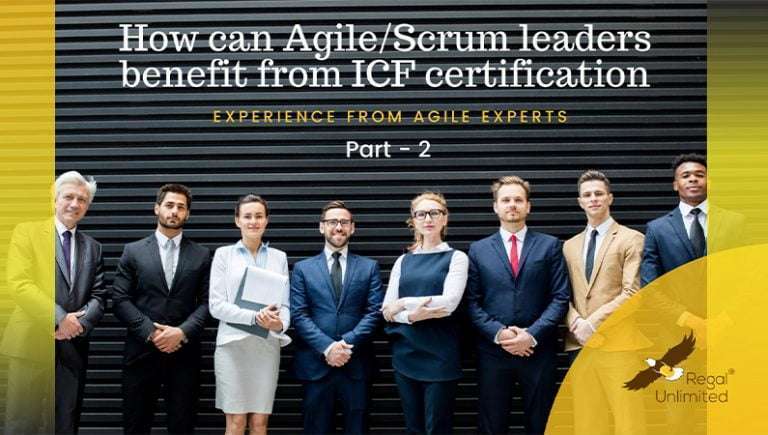A growing number of organizations build a coaching culture that offers employees at all levels the opportunity to grow their skills, enhance their value and reach their professional goals while building a high-performance organization. Coaching culture in organizations creates an environment, where employees are encouraged to find solutions themselves rather than look for directions from supervisors. This increases the overall capacity of the organization. The three-panel members – Janet M Harvey, Krishnamurthy Shankar, and Jaynene Hapanowicz gave their insights for this topic.
Janet M Harvey is the best-selling author of the award-winning “Invite Change – Lessons from 2020, The year of no return”. She is the CEO of inviteCHANGE, ICF Thought Leadership Institute Director. Janet has trained and coached leaders at fortune 500 companies across six continents for more than 25 years.
Krishnamurthy Shankar is the Group Head, Human Resource Department at Infosys. With 30+ years of experience, Shankar has facilitated transformation, capability, led HR transformation into a strategic partner.
Jaynene Hapanowicz, CTO and SVP of Dell digital, lead technology transformation and services development. She has spearheaded numerous strategic initiatives, the Dell/EMC Integration, and numerous technology conversions. She is a collaborative leader strengthening interlocks across teams and agile frameworks that rapidly deliver value.
Janet M Harvey who moderates the panel discussion recalls the session as a very important subject and expresses her pleasure in joining the field of coaching as an executive and working in coaching education since 1996.
Below is my attempt to recollect and pen down some of the key takeaways from this panel discussion so that it can continue to add value even beyond the event.
Why do organizations need coaching? Why is it the need of the hour?
Janet gives a four-pillar understanding;
- Coaching fulfills rigorous professional standards. The majority of the organizations use the criterion: has the person received professional training? Have they done peer review? Is there any evidence that they have demonstrated competency in coaching? This is a simple professional standard in every organization. Professional standards give a uniform baseline and yardstick to measure.
- Does the coaching address key strategic goals? Organizations always prefer their customers first. While every person in an organization contributes to that enterprise, they help themselves on the path of being more successful, hence the heightened need for employee-centricity. The coaches always have these two objectives for developing capabilities through coaching.
- To redesign the texture of Organizational Culture. Organizational culture is shaped by everyone at all times – the way people collaborate, team, understand. These are relevant points that coaching concentrates upon.
- Does it yield a discernible and measurable positive impact? Miss Janet’s 25 years of organized coaching has brought discipline to this; translating what is often seen as soft skills, development of humans to be more active personally and professionally. Having a discernible action-oriented approach to create positive outcomes is expected from Coaching interventions
Miss Jaynene was introduced to coaching in her early career. It was used as a mechanism to help high-potential leaders from different levels of their careers in those days. It was not formal. “That is how coaching was looked at, 20 years ago”, she adds.
It is progressing. Now, coaching is a priority because the benefits are tangibly visible. The coach leads the team, sets goals and strategies, motivates the employees, and enables them to perform the best. She shares her learning from coaching – “Putting Right People in the Right Position”, helps in achieving success.
Two objectives of Coaching in Organizations
Krishnamurthy Shankar was employed with Unilever when he started to attend coaching programs. He recalls the title “Performance Development Plan” that was used earlier for coaching.
Mr. Shankar believes there are two aspects of coaching.
One, what we define as coaching – People management, direction setting.
Two, what coaching truly is. He feels coaching done by leaders isn’t done quite well. While some sincerely do it, others do not. Mr. Shankar has a few reasons why he believes this happens.
– People look at short-term results while benefits of coaching are seen over a period of time.
– Lack of capability.
– View of the people as career mentoring rather than performance coaching.
As Mr. Shankar was listing down the aforementioned points in his talk, I was able to completely resonate with all of these points. The myopic view of various teams to meet targets and short-term results cannot justify the ‘Coaching approach’ because to be honest, Coaching is a long-term game. Also, the lack of professional and certified coaches in the market is another cause. Evidently, leaders use Mentoring (Telling and guiding) instead of Coaching to get the desired performance.
Mr. Shankar emphasizes making coaching a simple, easy-to-do concept rather than specialized stuff that only a few people could do, by creating psychological safety, discussing and solving the issues, and exploring new options.
Further in the discussion, the panel expounded on the vitality of Coaching as a Developmental Process. Here is what I remember from the discussion! The two important business objectives for an organization are Capability and Capacity.
Capability is the power and ability to do something
Capacity is the amount that something can produce
A coaching culture driven by a leader can increase capability and capacity. How does this happen? The type of culture a leader builts in his team and the way the team is treated helps in the betterment of the whole organization because the teammates to reciprocate the same in their attitude. Mr. Shankar tries to explain with three simple steps.
- Exposure of leaders for coaching. When an organization wishes to have a development program, it must have coaching as a part of it. When executive leaders undergo coaching there will be a great difference in the way they perform.
- Building safe spaces in the processes for coaching. Many companies have implemented “Performance check-in”. This is a kind of mini-coaching, where the managers have regular conversations with employees about work progress and goals.
- Building capability and capacity of the people.
Organizations must train the leaders while creating an inner feeling that coaching makes them better. They must recognize their results and show that coaching has indeed helped them. This way, the leaders can build better capability and capacity.
Miss Janet labels the conversation beautifully as progress from “Talent Management to Talent Development to Talent Experience”.
Coaching should be made simpler
Coaching is envisaged as a coveted skill for senior executives and senior leaders. Somehow I also feel that Coaching should be made simpler, the halo around it must be dimmed, and Coaching as a skill must be professionally learned to create the desired impact.
Mr. Shankar opines capabilities take a longer time to build. Coaching has to be made simpler, by translating elements of coaching into activities done in day-to-day work and routines; training people, and ensuring that they develop leadership commitments. He says different people have different needs. Not everyone wants a coaching discussion but few want career advice and mentoring alone. Therefore, it is important to have a broader inclusion of not only coaching but meeting the other needs too.
Janet Harvey also recommended a book: Enterprise-Wide coaching – The Ten Commandments, by Dr. John Hoover to understand and grasp the nuances of Coaching for Organizations
One question that I distinctly remember from the discussion was when the moderator asked, “How do the two participants of the panel justify the change in leadership behavior and coaching in an organization with the value proposition?” To which, Jaynene’s answer revolved around the term results. She feels outstanding results are consequential to the behavior of the leader and how he leads a team. As a leader, one must create a space to produce those results and also the chance to fail. Mr. Shankar talks of the importance of coaching.
People generally assume and wait for leaders to work wonders, but he feels the organization must begin to influence the leadership, by exposing them to coaching, enabling them to understand the benefits of coaching. When they experience results, they are motivated and feel coaching helps them in resolving matters in a better way.
Janet outlined two key nuggets from the panel discussion.
- Invite organizations to have a Culture Journal. What would the organizations hear differently if they adopt a coaching way of mindset, without making it too complex? “Coach a person out of the team gets transformed into Coach the team to rise to their best for a project” then it is seen as a useful intervention to raise capacity as against eliminating poor performance.
- The organizations must create a medium to narrate the experiences of coaching, where people can share what they have learned, how they performed better so that it spreads organically among everyone else in the organization.





